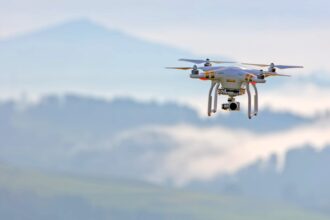In the annals of history, the ancient art of war stands as a testament to human ingenuity and strategic thinking. Early civilizations, such as the Sumerians, Egyptians, and Greeks, developed sophisticated military tactics that laid the groundwork for future warfare. The Sumerians, for instance, are credited with the invention of the chariot around 3000 BCE, which revolutionized battlefield mobility and allowed for rapid troop movements.
This innovation not only enhanced their combat effectiveness but also set a precedent for subsequent civilizations to adopt and adapt similar technologies. The Greeks further advanced military strategy with the formation of the phalanx, a tight infantry formation that maximized the effectiveness of their hoplites. This tactical innovation emphasized discipline and coordination among soldiers, allowing them to present a formidable front against enemy forces.
The strategic brilliance of leaders like Alexander the Great showcased how military ingenuity could be harnessed to achieve remarkable conquests, demonstrating that warfare was not merely about brute strength but also about clever tactics and psychological warfare. The ancient art of war thus became a complex interplay of technology, strategy, and human resourcefulness.
Key Takeaways
- The Ancient Art of War: Early civilizations demonstrated military ingenuity through the development of advanced weapons and tactics, such as the use of chariots and phalanx formations.
- Innovations in Warfare: The Middle Ages saw the introduction of new military technologies like the longbow and the use of gunpowder, revolutionizing the way battles were fought.
- The Age of Exploration: Military ingenuity in the Renaissance led to the creation of powerful naval fleets and the development of new navigation techniques, enabling global exploration and conquest.
- The Industrial Revolution and Military Ingenuity: The Industrial Revolution brought about the mass production of weapons and the use of steam power, transforming the nature of warfare.
- World War I: Military ingenuity in the trenches included the use of tanks, chemical warfare, and new communication technologies, changing the face of modern warfare.
Innovations in Warfare: Military Ingenuity in the Middle Ages
The Middle Ages marked a significant evolution in military ingenuity, characterized by the rise of feudalism and the emergence of powerful kingdoms. During this period, innovations such as the longbow and the crossbow transformed the dynamics of warfare. The English longbow, in particular, became a game-changer during battles like Agincourt, where its range and rate of fire allowed lightly armored archers to decimate heavily armored knights from a distance.
This shift in weaponry underscored the importance of training and skill over mere numbers on the battlefield. Additionally, the development of fortified castles represented a strategic response to the changing nature of warfare. These strongholds not only served as defensive structures but also as symbols of power and control over territories.
The use of siege engines, such as trebuchets and battering rams, illustrated the ingenuity required to breach these formidable defenses. As warfare became increasingly complex, so too did the strategies employed by military leaders, who began to understand the significance of logistics, supply lines, and troop morale in achieving victory.
The Age of Exploration: Military Ingenuity in the Renaissance

The Renaissance ushered in an era of exploration and expansion that was deeply intertwined with military ingenuity. As European powers sought new territories and trade routes, they also developed advanced naval technologies that would redefine maritime warfare. The introduction of galleons—large, multi-decked ships equipped with heavy cannons—allowed nations like Spain and Portugal to dominate the seas.
These vessels not only facilitated exploration but also enabled powerful naval engagements that would shape global politics for centuries. Moreover, this period saw the rise of gunpowder as a pivotal force in warfare. The invention of cannons and firearms changed the landscape of battlefields, rendering traditional fortifications less effective against artillery fire.
The strategic use of gunpowder weapons during sieges and open-field battles demonstrated a shift towards more modern forms of combat. Military leaders began to recognize the importance of integrating new technologies into their strategies, leading to a more dynamic approach to warfare that emphasized adaptability and innovation.
The Industrial Revolution and Military Ingenuity
| Aspect | Impact |
|---|---|
| Weaponry | Development of advanced firearms and artillery |
| Transportation | Introduction of steam-powered ships and trains |
| Tactics | Shift from traditional formations to more flexible strategies |
| Communication | Improvement in signaling and telegraph systems |
The Industrial Revolution marked a seismic shift in military ingenuity, as advancements in technology transformed not only weaponry but also the very nature of warfare itself. The introduction of railroads revolutionized troop movement, allowing armies to mobilize quickly across vast distances. This logistical capability was crucial during conflicts such as the American Civil War, where rail networks enabled rapid reinforcements and supply deliveries that could turn the tide of battle.
Furthermore, the development of rifled firearms significantly increased accuracy and range compared to smoothbore muskets. This innovation necessitated new tactics that emphasized cover and concealment, as soldiers could no longer rely solely on massed formations. The emergence of ironclad warships during this period also signified a departure from wooden vessels, leading to naval engagements that showcased the destructive power of modern artillery.
The Industrial Revolution thus laid the foundation for a new era of warfare characterized by speed, precision, and unprecedented lethality.
World War I: Military Ingenuity in the Trenches
World War I epitomized military ingenuity in an era defined by trench warfare and industrialized conflict. The static nature of trench lines necessitated innovative tactics to break through enemy defenses.
These armored vehicles changed the dynamics of battle, allowing for breakthroughs that had previously been unattainable. Additionally, World War I saw the widespread use of chemical weapons, which introduced a new dimension to warfare that emphasized psychological terror alongside physical destruction. Innovations such as aerial reconnaissance and coordinated artillery barrages showcased how technology could be harnessed to gain strategic advantages on the battlefield.
Despite the horrors of trench warfare, military leaders were compelled to adapt their strategies continuously, leading to a legacy of tactical evolution that would influence future conflicts.
World War II: Military Ingenuity in Modern Warfare

World War II represented a culmination of military ingenuity that reshaped global conflict on an unprecedented scale. The war saw the integration of air power into military strategy, with air forces playing crucial roles in both offensive operations and strategic bombing campaigns. The development of aircraft carriers revolutionized naval warfare, allowing for greater flexibility and reach in maritime operations.
The Battle of Midway exemplified how air superiority could decisively influence naval engagements. Moreover, World War II witnessed significant advancements in communication technology, including radar and encrypted messaging systems. These innovations enhanced situational awareness and coordination among allied forces, enabling more effective planning and execution of complex operations such as D-Day.
The war also spurred developments in logistics and supply chain management, ensuring that troops were adequately equipped and supported throughout various theaters of conflict. The ingenuity displayed during this period laid the groundwork for modern military doctrine and strategy.
The Cold War and Military Ingenuity
The Cold War era was characterized by a unique form of military ingenuity driven by ideological competition between superpowers. The arms race led to significant advancements in nuclear technology, with both the United States and the Soviet Union investing heavily in developing intercontinental ballistic missiles (ICBMs) and nuclear submarines capable of delivering devastating strikes across vast distances. This focus on deterrence fundamentally altered military strategy, emphasizing the importance of maintaining a credible threat to prevent direct conflict.
Additionally, unconventional warfare emerged as a critical component during this period, with proxy wars fought across various regions as superpowers sought to expand their influence without engaging in direct confrontation. The Vietnam War exemplified how guerrilla tactics could challenge conventional military forces, prompting a reevaluation of strategies employed by larger armies. Intelligence gathering through espionage and surveillance became paramount as nations sought to gain an edge over their adversaries in this high-stakes geopolitical landscape.
The Digital Age: Military Ingenuity in the Information Era
As society entered the digital age, military ingenuity evolved once again to incorporate advancements in information technology. Cyber warfare emerged as a new frontier, with nations recognizing the potential vulnerabilities inherent in interconnected systems. Cyber attacks could disrupt critical infrastructure or steal sensitive information without ever firing a shot, leading to a paradigm shift in how conflicts were waged.
Moreover, advancements in satellite technology revolutionized reconnaissance and communication capabilities on the battlefield. Real-time data sharing allowed for more informed decision-making and rapid responses to emerging threats. Drones became increasingly prevalent in military operations, providing surveillance capabilities while minimizing risks to personnel.
This integration of technology into military strategy underscored the importance of adaptability in an ever-changing landscape where information dominance could determine success or failure.
Unmanned Warfare: Military Ingenuity in the 21st Century
The 21st century has witnessed an unprecedented rise in unmanned warfare technologies that have transformed military operations globally. Drones have become synonymous with modern conflict, offering capabilities ranging from surveillance to targeted strikes without risking human lives on the front lines. This shift towards unmanned systems has not only changed how wars are fought but has also raised ethical questions regarding accountability and civilian casualties.
Additionally, advancements in artificial intelligence (AI) are beginning to shape military strategies as algorithms analyze vast amounts of data to inform decision-making processes. Autonomous systems are being developed for various applications, from logistics support to combat roles, further enhancing operational efficiency. As militaries around the world invest in these technologies, they must grapple with balancing innovation with ethical considerations surrounding their use on the battlefield.
Space and Military Ingenuity: The Final Frontier
As nations continue to explore outer space, military ingenuity is increasingly focused on this final frontier.
Space-based assets provide essential capabilities for navigation, surveillance, and missile warning systems that are integral to contemporary military operations.
Moreover, advancements in anti-satellite technologies raise concerns about potential conflicts extending beyond Earth’s atmosphere. As countries develop capabilities to disrupt or destroy enemy satellites, it becomes imperative for military strategists to consider space as a domain for both defense and offense. The race for dominance in space underscores how military ingenuity continues to evolve alongside technological advancements while highlighting the need for international cooperation to prevent conflicts from spilling into this new arena.
The Future of Military Ingenuity: Trends and Innovations
Looking ahead, military ingenuity is poised to continue evolving in response to emerging challenges and technological advancements. Trends such as increased automation on the battlefield will likely reshape traditional roles within armed forces as robots take on more responsibilities ranging from logistics support to combat operations. This shift may lead to redefined training programs focused on integrating human operators with autonomous systems effectively.
Furthermore, advancements in biotechnology may pave the way for enhanced soldier performance through innovations such as exoskeletons or cognitive enhancements that improve physical capabilities or decision-making processes under stress. As militaries adapt to these changes, ethical considerations surrounding human enhancement will become increasingly important. In conclusion, military ingenuity has been a driving force throughout history, shaping how wars are fought across different eras.
From ancient civilizations employing innovative tactics to modern-day conflicts leveraging cutting-edge technologies like AI and unmanned systems, each phase reflects humanity’s relentless pursuit of strategic advantage on the battlefield. As we move forward into an uncertain future marked by rapid technological change and evolving threats, it is clear that military ingenuity will remain at the forefront of national defense strategies worldwide.
The history of military ingenuity is a fascinating subject that delves into the innovative strategies and technologies developed throughout the ages to gain an advantage in warfare. A related article that explores this theme can be found on the website “In The War Room.” This article provides insights into various military tactics and inventions that have shaped the course of history. For more detailed information, you can read the article by visiting In The War Room. This resource offers a comprehensive look at how military ingenuity has evolved and its impact on modern warfare.
FAQs
What is military ingenuity?
Military ingenuity refers to the ability of military forces to develop and implement innovative solutions to overcome challenges and achieve strategic objectives. This can include the development of new technologies, tactics, and strategies.
What are some examples of military ingenuity throughout history?
Some examples of military ingenuity throughout history include the development of the Roman legion’s tactics, the use of gunpowder in warfare, the invention of the tank during World War I, and the development of stealth technology in modern aircraft.
How has military ingenuity impacted warfare?
Military ingenuity has had a significant impact on warfare by allowing military forces to gain strategic advantages, adapt to changing circumstances, and overcome technological and tactical challenges. It has also influenced the course of history by shaping the outcomes of conflicts and wars.
What role does military ingenuity play in modern warfare?
In modern warfare, military ingenuity continues to play a crucial role in the development of advanced weapons systems, cyber warfare capabilities, and strategies for asymmetric warfare. It also drives innovation in areas such as drone technology, electronic warfare, and information operations.




